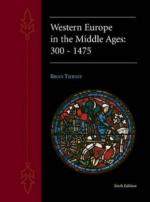|
This section contains 325 words (approx. 2 pages at 300 words per page) |

|
Concurrent with the decline of feudalism was the decline of another powerful and ubiquitous medieval institution, the papacy. Throughout most of the Middle Ages, the papacy was one of the most dominant forces in the religious, social, and political life of Europe. In a very real sense, feudalism helped perpetuate the fortunes of the papacy. In an age when government was largely decentralized, the Catholic Church was the only united, respected, and universal force in the West. Moreover, it commanded and usually received the obedience of all Christians. The pope, as supreme head of the church, enjoyed the benefits of its preeminent place in society. Popes crowned emperors and kings and, on numerous occasions, humbled them. Although without armies themselves, popes were able to muster crusading armies to battle not only infidels but also heretical Christians. Popes had the power to condemn all Christians...
|
This section contains 325 words (approx. 2 pages at 300 words per page) |

|




